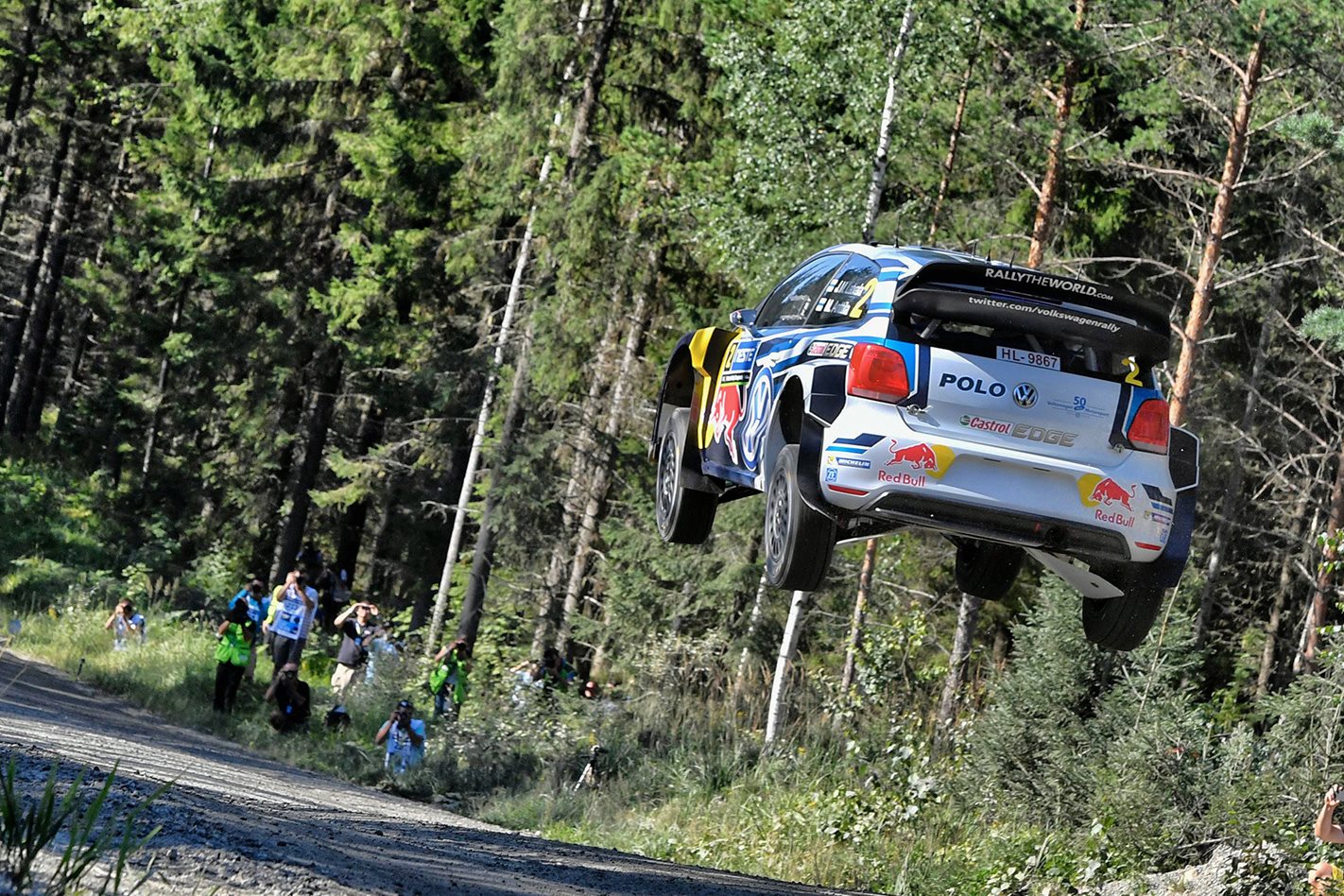On the face of it, the 2016 World Rally Championship followed a similar pattern to that of the previous three years – Sebastien Ogier first, daylight second.
While it’s true the Frenchman wrapped up his fourth straight title in dominant fashion, joining Tommi Makinen, Juha Kankkunen and Sebastien Loeb in an exclusive club, the 2016 WRC season was full of twists and turns, with six different winners for the first time since 2003.
Below we rate every full-time driver, along with the three leading WRC2 contenders as there’s a good chance one, if not all, will appear at the top level in 2017.
Citroen

Nonetheless, it was a successful year for the French maker, scoring two wins for the first time since 2013. Kris Meeke will be in title contention next year, but the big question is: will Sebastien Ogier be his team-mate?
Kris Meeke – A-
For what was meant to be a year off, 2016 has been good to Kris Meeke. With a long-term contract in his pocket, the immediate pressure was off and the result was unbelievable speed. He ran at the front in both Monte Carlo and Sweden before errant rocks quashed any chance of a good result.
A favourable road position helped the Irishman score his first win of the season in Portugal but his victory in Finland will go down in WRC history as one of the all-time greats. Meeke drove at 10-tenths for three days straight with zero mistakes, securing victory in the fastest WRC rally ever.
Accidents in Corsica and Spain lose him half a mark, but he showed front-running pace in both rallies, which all points to an extremely promising 2017 for a driver who until now has had to fight his whole career.
Craig Breen – A-
Another extremely talented Irishman, Breen was given the opportunity of a lifetime and grasped it with both hands. All that was required was to drive sensibly and gain experience and he did exactly that, scoring points finishes in every rally bar Wales where he rolled, for which he loses half a mark.
But he also proved his speed, posting a third-fastest stage time in the Swedish snow on his Citroen debut and scoring a sensational podium in Finland. His reward is a two-year contract, allowing him to build speed and experience.
Like Meeke, Breen has battled his way to the sport’s top level, including overcoming the death of his friend and co-driver Gareth Roberts in an accident at the 2012 Targa Florio. Such hardship has given Breen a real appreciation of his opportunity and his stage end comments have been a highlight of the year.
Stephane Lefebvre – B-
A tough year for the young Belgian. Known as a tarmac specialist, Lefebvre shone with fifth place at the season opener in Monte Carlo but his season was cut short with a terrifying accident in Germany which placed him and co-driver Gabin Moreau in hospital with serious injuries.
Undeterred, Lefebvre returned for Wales and Citroen has enough faith in his speed and talent to offer him a two-year contract alongside Breen and Meeke. Has the potential for top five finishes on tarmac next year, but still needs to gain plenty of experience.
Hyundai
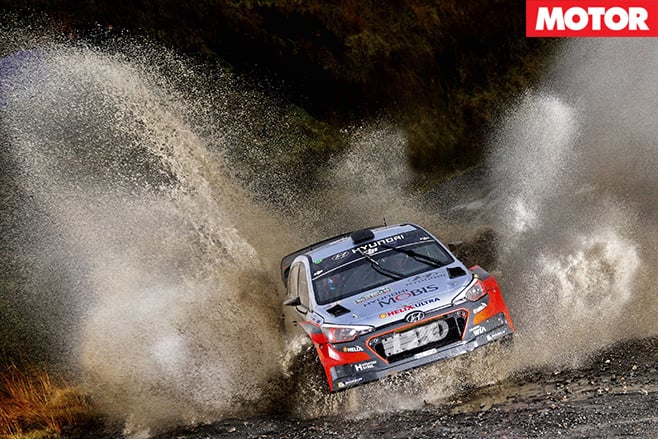
This success vindicated its strange decision to develop a brand new car for 2016 only. Its 2017 challenger has been under development for many months and with Volkswagen pulling out, the Koreans have to be the favourite for the manufacturers’ title.
Thierry Neuville – B+
Welcome back, Thierry. Having spent most of 2015 disillusioned with Hyundai’s decision to delay its new i20, Neuville started 2016 strongly with a podium at Monte Carlo but the wheel began to wobble again with two heavy crashes in Mexico.
Thankfully, with a win in Sardinia the Neuville that stormed to second in the drivers’ championship in 2013 re-emerged. A pair of fourths in Poland and Finland continued his resurgence before the Belgian finished the season with five successive podiums, resulting in second place in the championship.
While he still lacks the consistency of Ogier, with his confidence and motivation high once more, Neuville’s speed on all surfaces gives him a realistic shot at the 2017 title.
Hayden Paddon – A-
If 2015 was Hayden Paddon’s breakthrough year, 2016 proved it was no flash in the pan with consistent speed on every event, continuing his upward trajectory.
The highlight was undoubtedly his win in Argentina, not just for the result but for the manner in which it was achieved. With Ogier breathing down his neck, Paddon put it all on the line in the Power Stage with one of the finest single-stage drives the WRC has ever witnessed.
Unfortunately, two accidents immediately followed, one of which burned his car to a crisp, a harsh punishment for what was a relatively small mistake. Paddon’s relative lack of experience on tarmac made the second half of the season more difficult, and will probably preclude a run at the title in 2017, but this Kiwi is a fast learner.
Dani Sordo – B-
Mister Consistent delivered once again in 2016. Ironically, within an event Sordo’s performances can vary wildly, his stage times blisteringly quick on one day – as on day one of Rally Spain this year – and nowhere the next.
Over the course of an event, however, this tends to average out, which is why Sordo’s results from the first six events this year read as: 6th, 6th, 4th, 4th, 4th and 4th. He very rarely crashes and thus is likely to bring home a solid haul of points every rally, which is one reason why he has a fresh two-year contract from Hyundai.
The other reason is his searing pace on tarmac. Were it not for a certain Sebastien Loeb, Sordo would probably have 10-15 tarmac wins to his name by now rather than one, but he remains one of the top two or three rally drivers in the world when the surface is smooth.
Will continue to deliver consistent results in 2017 and could even sneak a win or two in Germany or Spain.
M-Sport
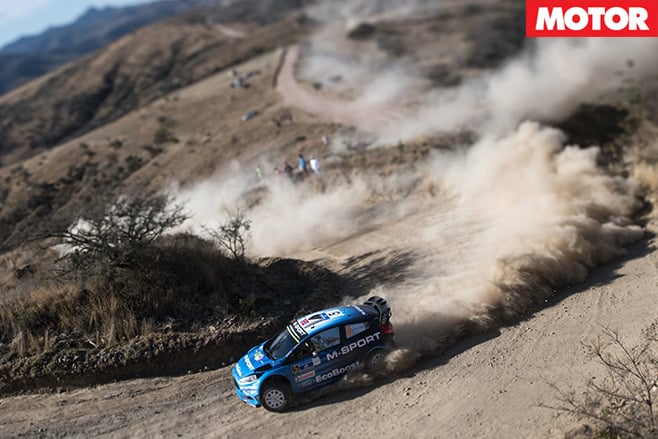
A brace of podiums would be as good as it would get for the works cars, Ostberg scoring consistent points but more often than not running around in the bottom half of the top 10. Camilli showed flashes of pace but spent as much time off the road as on it, while often being little faster than the demoted Elfyn Evans in an R5 car.
It’s a strong team at M-Sport, with plenty of knowledge and experience, but will it have the budget to build and develop a car at the same rate as Citroen and Hyundai? Then again, if it secures Ogier it could end up winning the 2017 championship!
Mads Ostberg – B-
Without a clear picture of how competitive the Fiesta is, it’s tough to accurately rate Ostberg’s 2016 performance. He finished in the points at every rally bar Italy, where a silly mistake cost him a strong finish that probably would have elevated him to sixth in the championship.
He battled a few reliability issues, but all too often Ostberg has stated he felt he did a good stage, only to be 0.5sec/km off the pace. Is that the Fiesta’s lack of competitiveness or Ostberg’s? Without a solid benchmark in a similar car, it’s impossible to know.
The Norwegian continues to work hard on his driving, entering a number of events in his personal R5 car this year and changing his tarmac technique, but he’s yet to show that last one or two per cent of outright pace that will elevate him from regular points finisher to podium contender.
Ott Tanak – B+
A standout year for the Estonian. Tanak has always displayed blinding speed, but all too often it’s been followed by an enormous accident. This year the speed has been there but consistency has joined it.
While his DMACK tyres gave him an advantage in soft, slippery conditions, his ability to battle for the lead for three days straight in Poland and Wales with next to no mistakes was extremely impressive. He deserved the win in Poland, and images of a distraught Tanak at the rally finish after a late puncture cost him victory was one of the year’s most moving moments.
Like most Scandinavians, still needs to work on his tarmac driving but if the 2017 M-Sport Fiesta – which Tanak is expected to be driving – is competitive he’s a podium chance on every loose surface rally.
Eric Camilli – C-
Malcolm Wilson believes Camilli is a future world champion, but history shows us early promotion to the WRC usually results in plenty of wrecked cars and the Frenchman’s debut year was no exception.
He was unlucky in Monte Carlo, but heavy accidents in Sweden, Germany, Finland and Australia meant the M-Sport mechanics always had plenty to do. The speed is there, sometimes matching the much more experienced Ostberg, and his drives in Portugal and Sardinia were impressive, but it was a case of too much too soon who for a driver who only had 10 WRC rallies under his belt prior to 2016.
Next year will be a challenge as the steep learning curve continues in a more powerful car amongst a more competitive field. It’s difficult not to feel that he and Elfyn Evans’ roles should’ve been reversed this year – another season in an R5 car would’ve done Camilli no harm at all.
Lorenzo Bertelli – D
A good national level driver competing on the world stage. Bertelli has the money to make his WRC dreams come true so good on him, but at no stage has he shown even a glimpse that he has what it takes to compete with the sport’s elite.
That’s a harsh assessment for someone who by most standards is a very good driver, but when Bertelli is trading times with the leading WRC2 cars, it’s clear his continued involvement in the WRC is dependent on the size of his bank account.
Volkswagen
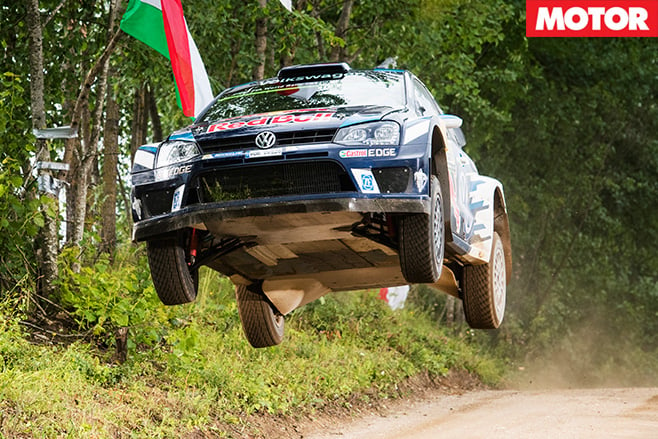
It ends a remarkable four-year period in which VW won 43 of 52 rallies, or even more impressively, 640 of 958 stages. It’s also arguable whether the WRC would have survived at all had VW not decided to enter in 2013 and largely fund the promotion of the sport at the same time.
The decision to pull-out came as a huge shock to the team and it’s a massive shame that the 2017 Polo WRC will never see competition. While it may be a politically expedient decision, to throw away 18 months of hard work and tens of millions of dollars of development seems incredibly wasteful.
Sebastien Ogier – A
Once again Ogier proved he operates on a different level to every other WRC driver, dominating the championship from the first round to take a fourth successive drivers’ title and further strengthen the argument that he’s the greatest rally driver of all time.
The WRC’s increased competitiveness meant that he won less – in fact, he only won one gravel rally all year – but it also worked in his favour. As different rivals kept winning, Ogier kept racking up the points, extending his championship lead at every rally. And when the running order worked in his favour he won six from six.
It wasn’t a perfect season: a low-speed spin put paid to the chance of a good result in Finland and another spin cost him the win in Australia. On the other hand, he utterly dominated in Monte Carlo, France and Germany and his drive in Australia – finishing the first two days less than three seconds from the lead after two days sweeping the road – almost defied belief.
While Ogier still has a long way to go to match his compatriot Loeb in the record books, consider this: when Loeb was Ogier’s age he had one world title and 10 WRC wins, Ogier has four titles and 38 wins.
Andreas Mikkelsen – B+
For 12 rounds of the 2016 season Andreas Mikkelsen looked his usual self: flashes of brilliance, the occasional accident and regular podium finishes. Then came Rally Australia, where he lifted his driving to a level previously not seen from the Norwegian.
It was an A+ performance at the perfect time, proving without a doubt that Mikkelsen can fight for victories in 2017 and beyond – if he can find a seat, of course, but on the strength of his season-ending performance that should be a formality.
Nonetheless, over the course of the season a B+ is deserved. If Ogier is the benchmark in a VW Polo, then finishing third in the championship more than 100 points down can only be seen as a moderately successful year.
Jari-Matti Latvala – C-
Another year of “what could’ve been” for JML. Poor reliability meant Jari-Matti’s rallies in Sweden and Germany were over before they began, but more often than not the vastly experienced Finn was the architect of his own demise.
Silly mistakes have plagued JML throughout his career and returned in 2016, rolling out of the lead in Argentina, clipping a fence in Spain and, worst of all, hitting a bridge just 20sec into Rally Australia, breaking the rear suspension and leaving him minutes from the lead.
Next year marks a real opportunity for Jari-Matti, a chance to break away from the stifling oppression of having the world’s best rally driver as a team-mate. If Latvala goes to Toyota as expected, he’ll be able to spend a year regaining confidence and developing a car to give him the all-important ‘feeling’.
Once upon a time JML was the fastest driver in the WRC; he needs to forget about championships, or even rally wins, and just drive as fast he can over every stage and the rest will take care of itself.
WRC2
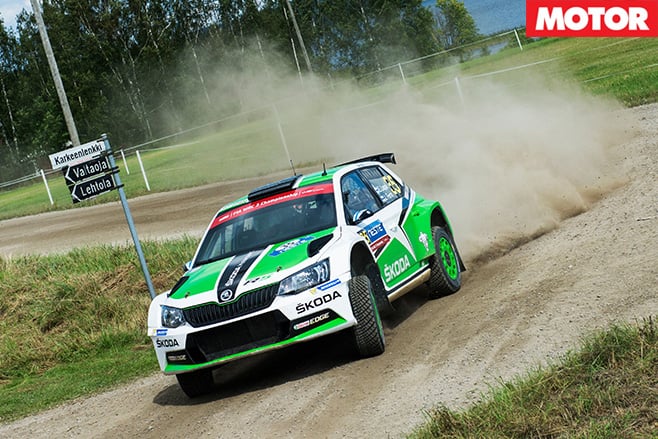
Esapekka Lappi – A
Touted as the next big thing for a few years now, Lappi’s rallying apprenticeship is now complete as the 2016 WRC2 champion. It was a relatively slow start for the 25-year-old Finn, but four straight victories to finish the year secured him the title.
Fast on all surfaces, Lappi is rumoured to have signed a one-year deal with Toyota for 2017 and there’s no reason he won’t appear in the top five on multiple occasions.
Teemu Suninen – A
It looks as though Suninen will miss out on the WRC merry go-round for 2017, but then at just 22 years of age he definitely has time on his side. He beat Lappi in a straight fight in Poland and scored further wins in Mexico and Italy to finish second in the WRC2 standings.
Perhaps his best course of action would be to take the seat vacated by Lappi in the factory Skoda WRC2 outfit for a run at the championship and hope a factory seat in the top class becomes available for 2018.
Elfyn Evans – A
Demoted from the M-Sport WRC squad in favour of Camilli, Evans turned his disappointment into motivation and put in the season of his life. His speed has been simply unbelievable at times this year, occasionally outpacing M-Sport’s WRC drivers, particularly on tarmac.
In addition to three wins in the WRC2 category, Evans utterly dominated the re-born British Rally Championship, victorious in five of the seven rounds. It would be a massive shame if the talented Welshman isn’t in a World Rally Car at the Monte Carlo start line on January 20.


